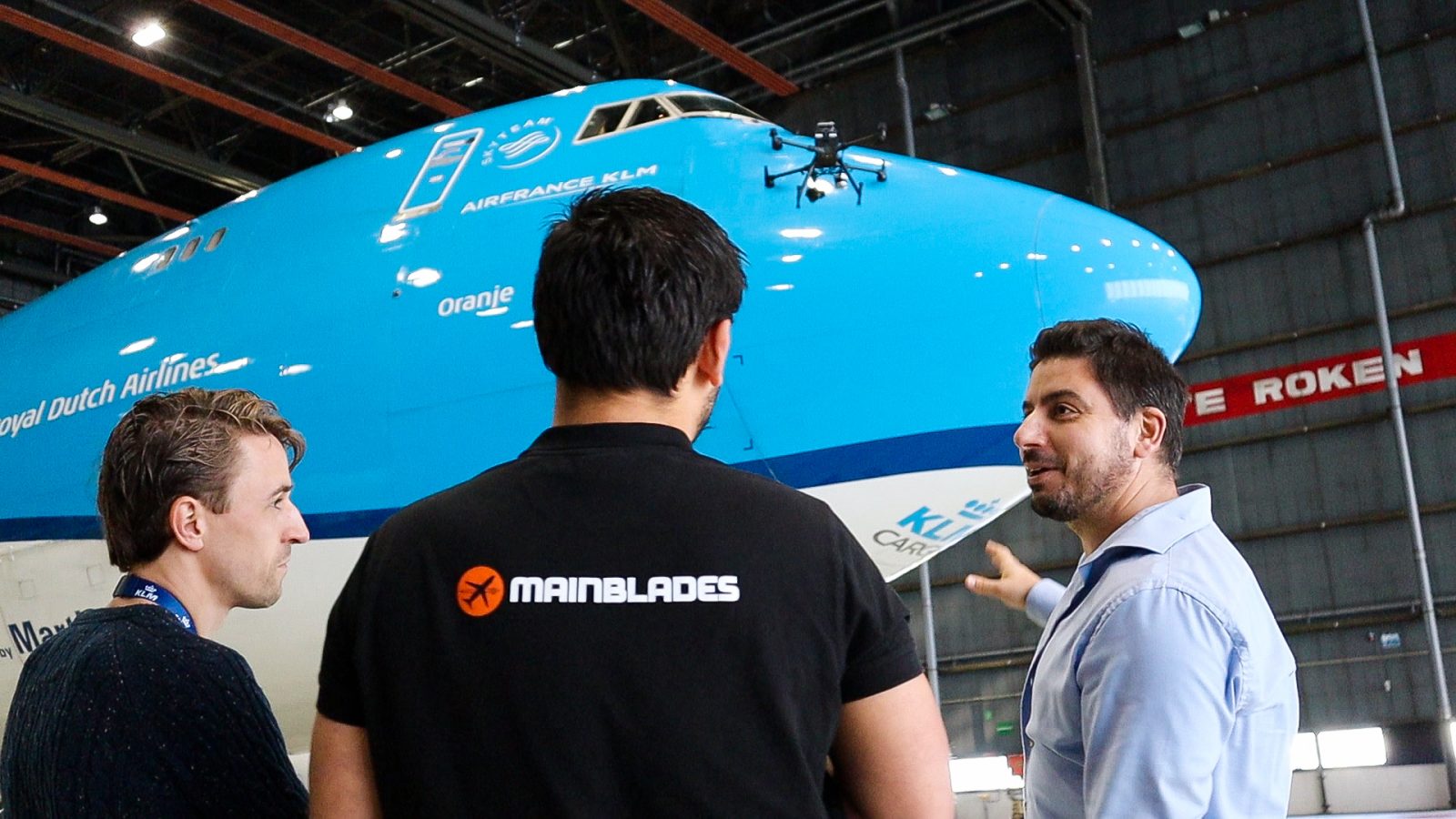
KLM Royal Dutch Airlines has taken another stride toward the routine use of drones for passenger aircraft inspection. It’s transforming its previously exploratory relationship with UAV service provider Mainblades into a multi-year partnership that aims to develop the automated process into a regular part of airline maintenance, repair, and overhaul (MRO) activity.
The Hague-based Mainblades and KLM announced the extension of their existing cooperation on Wednesday. What had been a quasi-proof-of-concept project begun in 2015 to test drones in automated aircraft inspections will give way to a three-stage development process. That involves fine-tuning the technology, obtaining certification for its regular use at Amsterdam’s Schiphol Airport, and putting it in the hands of KLM Engineering & Maintenance (E&M) technicians who work to ensure the company’s airplanes are sound.
Up until now, Mainblades had conducted trial drone inspections of KLM craft for minor damage inflicted by events like hailstorms and lightning strikes. Images taken from those were fed through artificial intelligence algorithms for instant analysis, which technicians followed and responded to on linked tablets. In addition to proving the technique was effective in detecting actual or potential impairments and determining remedial action, the consultation process allowed KLM E&M employees to interact with Mainblades officials, who then adapted the system to real-life use requirements and preferences.
The new chapter being opened aims to shift from that exploratory mode toward one of eventual deployment in KLM’s MRO activities. Though many groups have been testing automated drone use in passenger and military aircraft inspections, the KLM-Mainblades objective to bring that to certified, routine operational reality could have enormous consequences.

Every minute a plane remains idle on the ground means money lost for the airline, with checks and MRO intervention accounting for a lot of that down time. The ability to have UAVs quickly and effectively assume the work of the six to eight humans who must currently access the fuselage and wings during manual checks would result in enormous economies of time – and with that, money. And in an era still punctuated by covid-driven restrictions, automated aerial inspections and instant digital analyses could allow officials unable to be physically present to make informed decisions about whether repairs are necessary.
“With several hundred inspections on average per year, the potential resource savings we are expecting are quite significant,” says Bas de Glopper, innovation manager for KLM MRO Lab. “The use cases are numerous because the Mainblades drone is a highly modular system. It works on any aircraft model, both inside and outside of the hangar, and most importantly, can be used while the regular maintenance operations are in progress. This flexibility is unique in this field.”
Three-step plan for automated drone inspections of passenger airplanes
The first phase of the extended partnership calls for the creation of digital 3D LiDAR maps of KLM’s A330, B737, B777, and B787 planes. Those will be crucial in allowing Mainblades drones to understand the makeup of craft and surrounding hangar space, and provide consistent, reliable structural data, no matter how or where the jets are positioned.
The second aims to get the process fully certified, which would permit automated drone inspection of passenger aircraft to become a real, regular MRO tool. The third phase will be training KLM E&M technicians so they feel comfortable and confident in piloting effective UAV checks with far less physical effort and time than manual methods require.
“Mainblades and KLM E&M are showing the industry that aircraft inspections with drones are ready to be used on a day-to-day basis,” says Mainblades CEO Dejan Borota. “Drone inspections at KLM E&M will be a game-changer. Our partnership has been beneficial to both parties in the past and we look forward to add further value to KLM E&M’s ambitious road map of digitalizing and automating their operations in the future.”
FTC: We use income earning auto affiliate links. More.




Comments